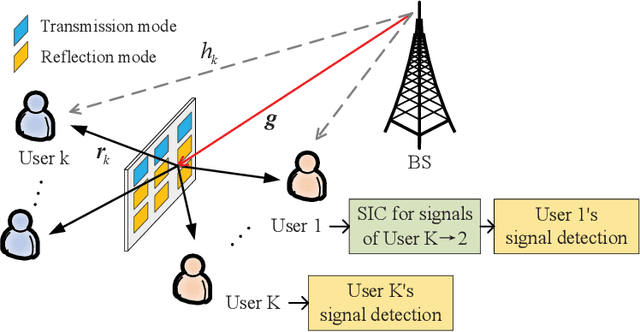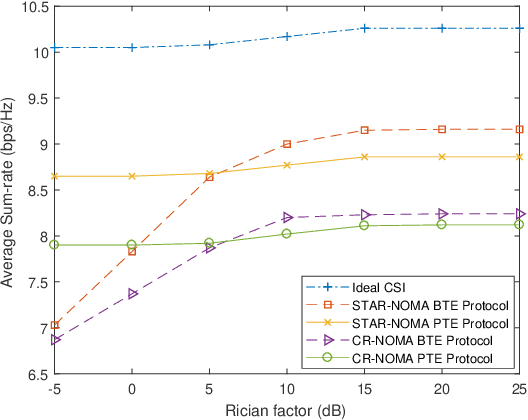Two-Timescale Design for STAR-RIS Aided NOMA Systems
Paper and Code
Jul 02, 2022



Simultaneously transmitting and reflecting reconfigurable intelligent surfaces (STAR-RISs) have emerged as a promising technology for achieving full-space coverage. Prior works on STAR-RISs mostly assumed the full and instantaneous channel state information (CSI) is available, which, however, is practically difficult to obtain due to the large number of elements. To address it, we investigate STAR-RIS aided NOMA systems, where two efficient two-timescale transmission protocols are proposed for different channel setups to maximize the average sum-rate. Specifically, 1) for line-of-sight (LoS) dominant channels, we propose the beamforming-then-estimate (BTE) Protocol, where the long-term STAR-RIS coefficients are optimized based on the statistical CSI, while the short-term power allocation at the base station (BS) is designed based on the effective channels; 2) for the rich scattering environment, we propose an alternative partition-then-estimate (PTE) Protocol, where the BS determines the long-term STAR-RIS surface-partition strategy; then the BS estimates the instantaneous subsurface channels and designs its power allocation and STAR-RIS phase-shifts accordingly. Simulation results validate the superiority of our proposed transmission protocols as compared to various benchmarks. It is shown that the BTE Protocol outperforms the PTE Protocol when the number of STAR-RIS elements is large and/or the LoS channel components are dominant, and vice versa.
 Add to Chrome
Add to Chrome Add to Firefox
Add to Firefox Add to Edge
Add to Edge